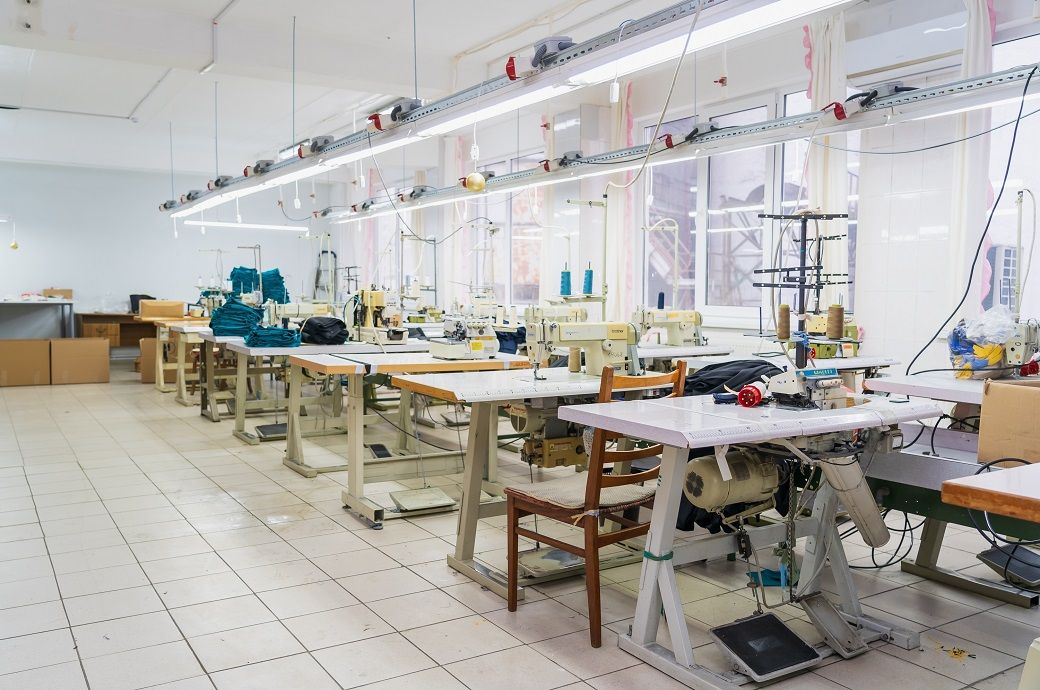
According to industry insiders, this disjointed framework severely hampers the sector’s operational efficiency. The lack of integration among various players across the supply chain creates bottlenecks that are difficult to resolve and, in the long run, diminishes India’s competitive edge in the global market.
However, as opportunities knock on the country’s door, thanks to fresh geopolitical and trade developments, textile parks can offer an ideal solution to address the issue of supply chain integration and boost India’s apparel exports.
“Textile parks play an important role in helping integrate the supply chain,” noted an industry insider discussing how issues related to supply chain is impacting the industry’s potentials, in a discussion with Fibre2Fashion.
According to him, textile parks serve not only as integration hubs but can also act as catalysts for modernisation. They encourage investment in high-tech machinery and advanced processes in spinning, weaving, and finishing, while supporting sustainability initiatives like waterless dyeing and practices grounded in the circular economy simultaneously.
Despite the advantages, some hurdles still seem to prevent the textile parks from reaching their full potential.
N Thirukkumaran, Chairman of Tiruppur-based Ess Tee Exports India Pvt Ltd, pointed out that many textile parks struggle to meet the basic infrastructure requirements. “This increases production costs and hampers the efficiency of manufacturing processes,” Thirukkumaran claimed, highlighting issues such as unreliable electricity and inadequate water supply as some of the key concerns.
Poor transportation networks—including inadequate road, rail, and port connectivity—exacerbate logistical challenges and lead to delays in both procuring raw materials and delivering finished products, he further added.
To add to the woes, the industry is also burdened by scarcity of skilled manpower, especially in certain hubs. Thirukkumaran believes this might prove to be an obstacle towards the success of the textile parks in some places.
In an earlier interaction with Fibre2Fashion, Dr. A Sakthivel, Honorary Chairman of Tiruppur Exporters’ Association underlined the issue of acute shortage of trained hands in the ‘Knitwear Capital of India’ when he maintained: “Even if 60,000 workers were to arrive in Tiruppur tomorrow, we could absorb them immediately.”
Given the unique mix of complexities, several industry leaders are calling for a more collaborative approach to develop the textile parks—one that involves both the public and private entities.
Advocates of the Public-Private Partnership (PPP) model argue such collaborations could help alleviate some of the more entrenched issues.
Rahul Mehta, Chief Patron of the Clothing Manufacturers Association of India (CMAI), outlined a number of key challenges faced by privately developed parks. “If a park is developed solely by a private player, several issues arise including land acquisition challenges with high costs and procedural delays, financial constraints that limit access to affordable capital for SMEs, and skill shortages, which create a gap between industry needs and workforce capabilities,” Mehta explained.
Thirukkumaran too vouched in favour of the PPP model even as he proposed setting up specialised training institutes within or near the textile parks as a step towards developing skilled workforce, aligned with the requirements of modern technology and manufacturing practices.
“Identify specific regions for integrated infrastructure development across the country. Prioritise the creation of textile clusters with end-to-end facilities that support the entire production process,” Thirukkumaran recommended, highlighting the importance of regional development.
In this context, the PM MITRA (Mega Integrated Textile Region and Apparel) Parks are emerging as a potentially transformative initiative. These parks are envisioned to serve as comprehensive hubs that consolidate the entire textile value chain—from spinning to garment manufacturing—under one roof. By doing so, they aim to eliminate inefficiencies, streamline operations, and attract large-scale investments.
The overarching goal of the PM MITRA scheme is to strengthen India’s textile industry by enabling scale, enhancing competitiveness, and generating employment, while reducing logistics costs significantly.
“Realistic expectations from PM MITRA include potential benefits like consolidation of the supply chain to reduce logistics costs and inefficiencies, attracting FDI to boost scale of economies, and encouraging better compliance with global sustainability norms,” commented Rahul Mehta.
Based on the unique 5F vision—Farm to Fibre to Factory to Fashion to Foreign, seven PM MITRA Parks have been approved, one each in Bhainsola, Dhar (Madhya Pradesh), Virudhunagar (Tamil Nadu), Amravati (Maharashtra), Navsari (Gujarat), Lucknow-Hardoi region (Uttar Pradesh), Warangal (Telangana), and Kalaburagi (Karnataka).
Recently, the Indian Textiles Ministry announced the approval of ₹18.94 billion (~$221.25-million) for setting up the PM MITRA Park in Virudhunagar. The 1,052-acre site will house an advanced textile manufacturing complex focused on technical textiles and integrated processing units.
Mehta’s optimism is echoed by Thirukkumaran, who believes this initiative could help resolve many of the longstanding issues. “Apart from addressing the issue of fragmentation effectively, this will help foster collaboration between the stakeholders,” Thirukkumaran opined but cautioned the road ahead may not be completely free of obstacles.
A major challenge lies in integrating small and medium enterprises (SMEs) and local players into this centralised model. He stressed a ‘plug and play’ approach, backed by robust infrastructure, as essentials for enabling greater SME participation. This model would offer ready-to-use facilities and services, making it easier for smaller companies to operate within these parks.
For making textile parks more appealing to the potential stakeholders, a prominent industry player offered some more suggestions like offering targeted incentives, especially for units in non-traditional or remote areas, setting up Common Facility Centres (CFCs), shared research and development, warehousing, and testing facilities.
The garment maker also advocated a cluster-based approach that aligns with existing industry hubs rather than creating isolated, product-specific parks.
Echoing the sentiments, another industry player highlighted the need for policy support, simplifying operational procedures and making textile parks more accessible. Recommendations include implementing a single-window clearance mechanism for faster approvals alongside offering subsidised financing options such as low-interest loans and tax incentives.
Such measures, it is argued, would substantially boost the popularity and viability of textile parks, helping them fulfil the intended role in revitalising the country’s textile and apparel sector.
ALCHEMPro News Desk (DR)
Receive daily prices and market insights straight to your inbox. Subscribe to AlchemPro Weekly!